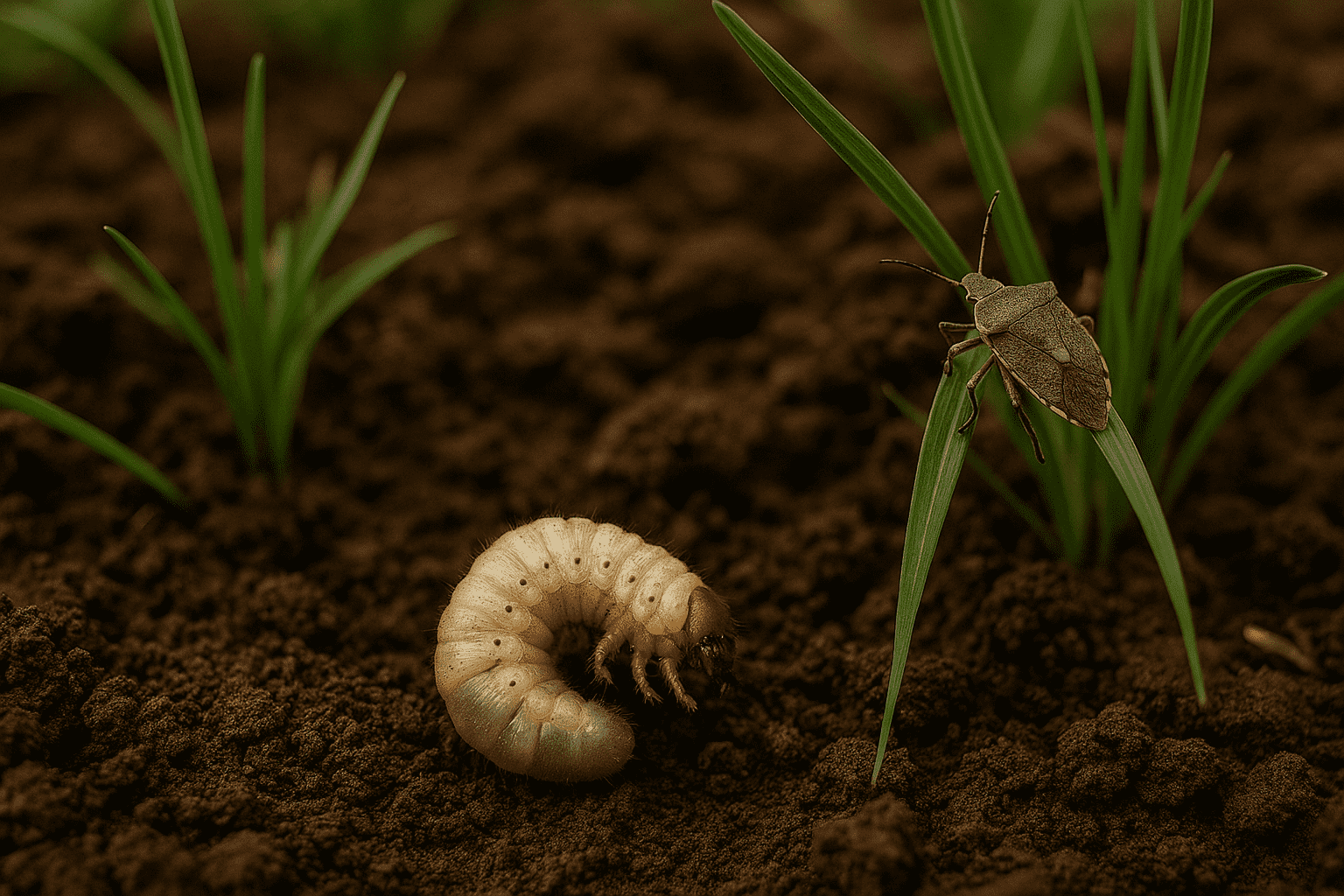In the quest for sustainable agricultural practices, scientists and farmers are increasingly turning to nature’s own arsenal for pest control. Among these natural allies, entomopathogenic nematodes (EPNs) stand out as a promising and versatile biocontrol agent. These microscopic roundworms, naturally occurring in soil ecosystems worldwide, possess the remarkable ability to infect and kill insect pests, offering a compelling alternative to synthetic pesticides. This article delves into the fascinating world of EPNs, exploring their biology, mechanisms of action, and the immense potential they hold for shaping a more sustainable future for agriculture.
Nature’s Tiny Assassins: A Closer Look at EPNs
EPNs belong to several genera, primarily Steinernema and Heterorhabditis, and are characterized by their unique symbiotic relationship with bacteria. These nematodes exist in the soil as infective juveniles (IJs), a non-feeding, highly resilient stage adapted for survival and dispersal. When an IJ encounters a susceptible insect host, it actively seeks entry through natural openings like the mouth, anus, or spiracles.
Once inside the insect, the IJ releases its symbiotic bacteria, typically Xenorhabdus (for Steinernema) or Photorhabdus (for Heterorhabditis). These bacteria rapidly multiply, releasing toxins that kill the insect host within 24-48 hours. The bacteria also break down the insect tissues, providing a nutrient-rich environment for the nematodes to reproduce.
After several generations, the nematodes emerge from the cadaver as new IJs, ready to seek out new hosts and continue the cycle. This self-replicating nature of EPNs is a key advantage over many other biocontrol agents, as a single application can provide long-lasting pest control.
The Power of Biocontrol: How EPNs Combat Insect Pests
The effectiveness of EPNs as biocontrol agents stems from several factors:
- Broad Host Range: EPNs are effective against a wide range of insect pests, including soil-dwelling insects like grubs, cutworms, and root weevils, as well as above-ground pests like caterpillars, borers, and leaf miners.
- High Virulence: The symbiotic bacteria associated with EPNs are highly virulent, ensuring rapid and efficient killing of the insect host.
- Environmental Safety: EPNs are generally considered safe for humans, animals, and beneficial insects. They are also biodegradable and do not persist in the environment like synthetic pesticides.
- Compatibility with Integrated Pest Management (IPM): EPNs can be seamlessly integrated into IPM programs, complementing other control strategies like cultural practices, resistant varieties, and selective insecticides.
- Reduced Risk of Resistance: The complex mode of action of EPNs and their symbiotic bacteria makes it difficult for insects to develop resistance.
Unlocking the Potential: Applications in Sustainable Agriculture
The application of EPNs in agriculture is gaining momentum worldwide. They are commercially available in various formulations, including sprays, granules, and drenches, and can be applied using conventional irrigation equipment. EPNs are being successfully used to control pests in a wide range of crops, including:
- Vegetables: Controlling soil-dwelling pests that damage roots and stems.
- Fruits: Targeting borers and other pests that affect fruit quality and yield.
- Turfgrass: Managing grubs and other soil pests that damage lawns and golf courses.
- Ornamentals: Protecting plants from a variety of insect pests.
Challenges and Future Directions
Despite their immense potential, the widespread adoption of EPNs faces certain challenges:
- Environmental Sensitivity: EPNs are susceptible to desiccation, UV radiation, and extreme temperatures. Optimizing application timing and techniques to minimize these stresses is crucial.
- Soil Type and Moisture: Soil texture and moisture content can affect EPN movement and survival. Understanding these factors is essential for successful application.
- Cost: The cost of EPNs can be a barrier for some farmers, particularly in developing countries. Research is ongoing to develop more cost-effective production methods.
Future research efforts are focused on:
- Improving EPN Strain Selection: Identifying and developing EPN strains that are more tolerant to environmental stresses and more effective against specific pests.
- Optimizing Application Techniques: Developing new application methods that improve EPN delivery and survival in the field.
- Understanding EPN-Soil Interactions: Gaining a better understanding of how soil properties affect EPN movement and persistence.
- Developing Synergistic Combinations: Exploring the potential of combining EPNs with other biocontrol agents or compatible pesticides to enhance pest control efficacy.
Conclusion: A Sustainable Solution for Pest Management
Entomopathogenic nematodes represent a powerful and sustainable tool for pest management in agriculture. Their ability to naturally infect and kill insect pests, coupled with their environmental safety and compatibility with IPM programs, makes them an increasingly attractive alternative to synthetic pesticides. As research continues to unravel the hidden potential of these microscopic allies, EPNs are poised to play a significant role in shaping a more sustainable and resilient future for agriculture, ensuring food security while minimizing environmental impact. By embracing these natural solutions, we can move towards a healthier and more balanced ecosystem for generations to come.
– Aasha Rana, Department of Biosciences
Faculty of Basic & Applied Sciences, Madhav University

